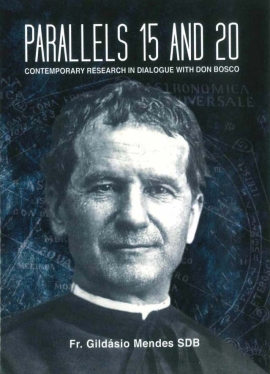Don Bosco was a dreamer! His countless dreams, with different interpretations, are full of images, designs, geographical elements (spaces, dimensions, relationships, distances, correlations), visual elements, sounds: all forming a veritable kaleidoscope. He studied geography. Mentally, he created images and symbols, drew up real layouts for churches and schools. He planned his educational environments, including the courtyard or playground. He engaged in real engineering of places, spaces, and the architectural relationships between spaces and people.
Don Bosco, as we look at him today, is an architect of the human and the material. He is an artist who creates and shapes the things around him. Everything is seen in terms of relationship, space, movement, human, technical and organisational dynamism.
In all of this we discover a human being with great inner capacity and energy, of immense affective and relational expressiveness, of tenacious determination to get things done. The Don Bosco that emerges from this study is an emotionally and spiritually rich individual whose skills and practical knowledge allow him to be innovative, operative and a leader.
Starting from some assumptions about multiple intelligence, neuroscience, spatial geography, virtual reality, cognitive and affective psychology, this study proposes to find the epistemological elements in Don Bosco the man and the saint, and in his educational work, that can open a dialogue with people today in a world that is dominated by science and technology.
In the final part of the book, the author proposes a dialogue between Don Bosco’s educational vision and some contemporary sciences such as artificial intelligence, biotechnology, biology and ecology, and education.
“My earnest and committed intention in developing this new perspective is to encourage more people to get to know the rich, polyhedral figure of Don Bosco, who was profoundly human and profoundly holy, and to open up dialogue with people today with regard to his educational system and contemporary approaches” Fr. Gildasio Mendes finally states.
“For sure, the book carries its own philosophy: the love and wisdom to discern the opportunities that our time brings with it for the good of the young, using a Salesian hermeneutic. This approach to Salesianity will intrigue readers and broaden their minds to new perspectives. Parallels 15 and 20 is recommended for anyone brave enough to travel to, till now, uncharted Salesian territories”. (Fr Robert Falzon SDB)
Published by Pubblikazzjoni Salesjana (Sliema, Malta), in 2024, and printed by Malta’s own Salesian Press, the book contains 125 pages and is printed in an easy-to-read A5 format in a legible typeface and appropriate font size.


